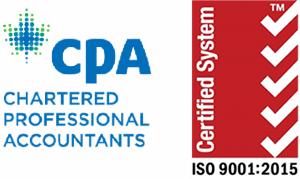You already know that your company’s revenue and profits play a big role in how much your business is worth.
Do you also know the role cash flow plays in your valuation?
Cash Flow vs. Profits
Cash flow is different than profits in that it measures the cash coming in and out of your business rather than an accounting interpretation of your profit and loss. For example, if you charge $10,000 upfront for a service that takes you three months to deliver, you recognize $3,333 of revenue per month on your profit and loss statement for each of the three months it takes you to deliver the work.
But since you charged upfront, you get all $10,000 of cash on the day your customer decides to buy. This positive cash flow cycle improves your company’s valuation because when it comes time to sell your business, the buyer will have to write two checks: one to you, the owner, and a second to your company to fund its working capital – the cash your company needs to fund its immediate obligations like payroll, rent, etc.
The trick is that both checks are drawn from the same bank account. Therefore, the less the acquirer has to inject into your business to fund its working capital, the more money it has to pay you for your company.
The inverse is also true.
If your company is a cash suck, an acquirer is going to calculate that she needs to inject a lot of working capital into your business on closing day, which will deplete her resources and lessen the check she writes to you.
How to Improve Your Cash Flow
There are many ways to improve your cash flow – and therefore, the value of your business. One often overlooked tactic is to spend less on the machines your company needs to operate.
In the restaurant business, for example, there is an often repeated truism that it takes three bankruptcies at a single location before any restaurant can
make money. The first owner of the restaurant walks in and – with all of the typical optimism of a new entrepreneur – pays cash for a brand new commercial kitchen complete with fancy stove, commercial-grade walk-in coolers, etc., as well as all-new dishware, pots, and pans, thus depleting his cash reserves before opening night. Within a year, the restaurant owner runs out of cash and declares bankruptcy.
Then along comes a second entrepreneur who decides to set up her restaurant at the same location and buys all of the shiny new equipment from owner number one’s creditors for 70 cents on the dollar, figuring she has made a wonderful deal. But the outlay of cash is still too great and she too is out of business within a year.
It’s not until the third owner comes along that the location actually survives. He saves his cash by buying all of the equipment off the second owner for 10 cents on the dollar.
Conclusion
The moral of the story is: find a way to reduce the cash you spend on equipment, however you can. Can you buy your gear used on sites like eBay? Can you share a very expensive piece of machinery with another non-competitive business? Can you rent instead of buying?







